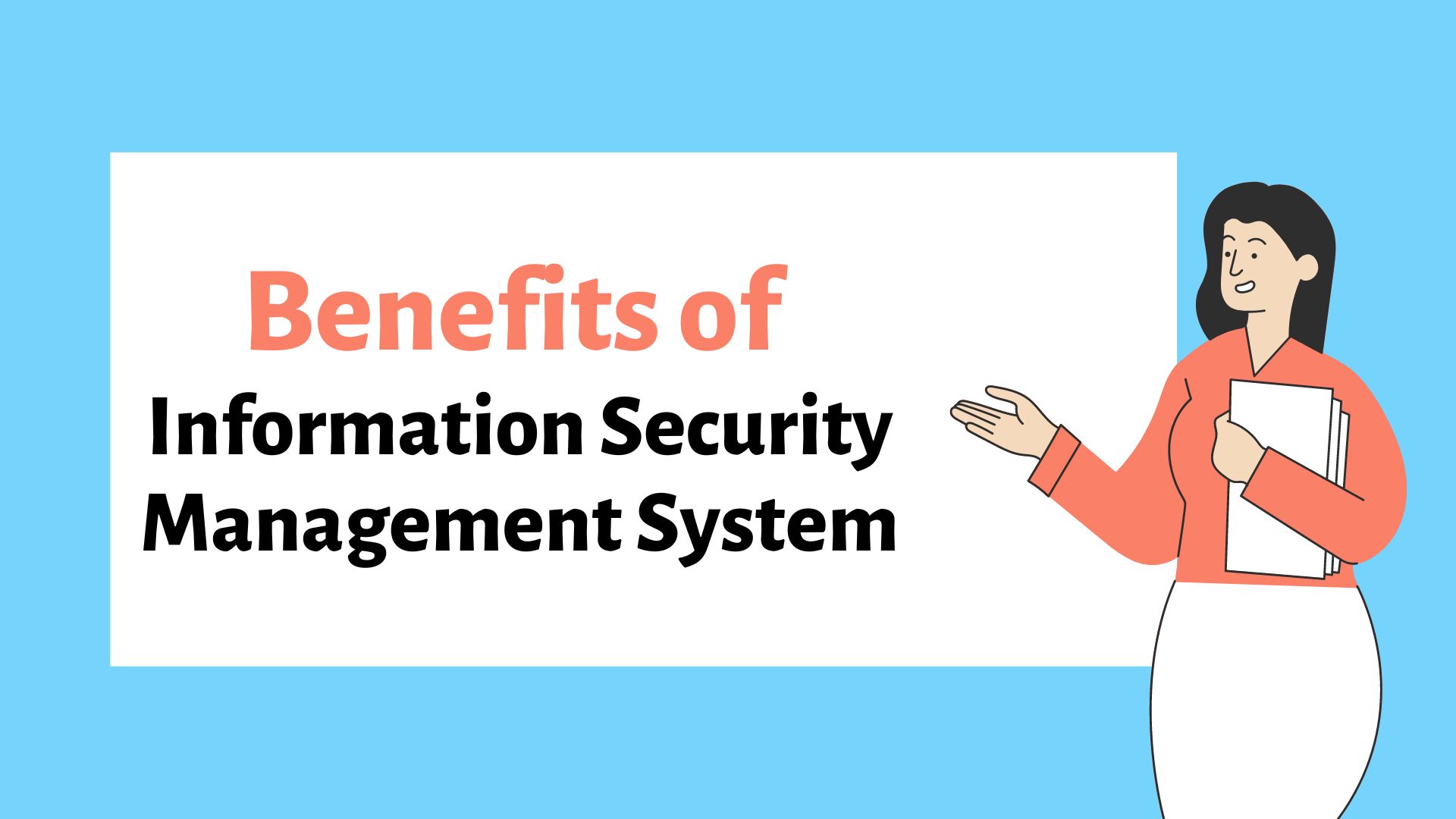Information Security Management System (ISMS) is a system
that provides a framework for managing and protecting sensitive information in
an organization. The main objective of an ISMS is to maintain the
confidentiality, integrity, and availability of information by implementing a
set of policies, procedures, and controls.
Why is Information Security Management System (ISMS) important?
Information is one of the most critical assets of any
organization, and its loss or theft can have severe consequences, including
financial loss, damage to the organization's reputation, legal implications,
and loss of customer trust. Therefore, it is essential to protect sensitive
information from unauthorized access, disclosure, alteration, destruction, and
theft. An ISMS helps organizations to protect their information assets by
implementing a systematic approach to managing information security risks.
Components of an ISMS:
- Risk Assessment: The first step in developing an ISMS is
to conduct a risk assessment to identify the assets that need protection, the
threats that they face, and the vulnerabilities that could be exploited by
attackers. The risk assessment process helps organizations to understand the
potential impact of security incidents and to prioritize their security
efforts.
- Policies and Procedures: Once the risks have been
identified, organizations need to develop policies and procedures to mitigate
those risks. Policies and procedures provide a framework for employees to
follow, ensuring that they are aware of their responsibilities and the actions
they need to take to protect sensitive information.
- Controls: An ISMS includes a set of controls that are
designed to protect information from unauthorized access, disclosure, alteration,
destruction, and theft. Controls can be technical, physical, or administrative,
and they include measures such as access controls, encryption, firewalls,
intrusion detection systems, and backup systems.
- Training and Awareness: Employees are the first line of
defense in protecting sensitive information. Therefore, organizations need to
provide regular training and awareness programs to ensure that employees are
aware of the risks and the actions they need to take to protect sensitive
information.
- Continuous Improvement: An ISMS is not a one-time effort
but a continuous process of improvement. Organizations need to regularly review
and update their policies, procedures, and controls to ensure that they remain
effective against new and emerging threats.
Benefits of an Information Security Management System (ISMS):
- Protection of Confidential Information: An ISMS helps
organizations protect sensitive and confidential information by implementing
appropriate controls to prevent unauthorized access, modification, or
disclosure.
- Compliance with Regulatory Requirements: Many industries
are required to comply with specific data protection regulations. An ISMS helps
organizations meet these requirements by implementing the necessary controls
and providing evidence of compliance.
- Improved Business Continuity: An ISMS provides a
framework for identifying and mitigating information security risks, reducing
the likelihood of security incidents that could disrupt business operations.
- Enhanced Reputation: A strong information security
posture can help an organization build trust and confidence with its
stakeholders, including customers, partners, and investors.
- Reduced Costs: Implementing an ISMS can help reduce the
cost of security incidents, such as data breaches or system downtime, by implementing
appropriate controls to prevent them.
- Increased Competitive Advantage: An organization with a
robust ISMS can differentiate itself from its competitors by demonstrating a
commitment to information security and providing assurance to customers that
their data is safe.
- Improved Employee Awareness: An ISMS can help raise
awareness of information security risks and best practices among employees,
reducing the likelihood of human error that can lead to security incidents.
- Better Decision Making: An ISMS provides management with
the necessary information to make informed decisions about information
security, including the identification of areas that require improvement.
- Scalability: An ISMS can be scaled to meet the needs of
organizations of any size, from small businesses to large multinational
corporations.
Basic stages to adopting an ISMS
Following are the basic stages to adopting an information
security management system.
- Define the scope: Identify the boundaries of your
information security management system (ISMS), including the assets, processes,
and stakeholders that will be covered.
- Perform a risk assessment: Conduct a risk assessment to
identify potential threats and vulnerabilities to your information assets. This
includes an analysis of the likelihood and impact of each risk.
- Develop a security policy: Create a security policy that
outlines your organization's security objectives and principles. The policy
should be consistent with your business objectives, legal and regulatory
requirements, and best practices in the industry.
- Implement controls: Develop and implement a set of
controls that mitigate the risks identified during the risk assessment. This
includes technical, administrative, and physical controls.
- Train employees: Provide training to all employees on the
security policies, procedures, and controls. This will help ensure that
everyone understands their role in maintaining the security of the
organization's information.
- Monitor and evaluate: Regularly monitor and evaluate the
effectiveness of your ISMS to ensure that it is meeting the objectives of the
security policy. This includes ongoing risk assessments and testing of
controls.
- Continually improve: Use the results of your monitoring
and evaluation to identify areas for improvement and implement changes to the
ISMS. This includes updating policies, procedures, and controls to reflect
changes in the threat landscape and business environment.
- Certification: Consider obtaining certification for your ISMS
to demonstrate to stakeholders that you have implemented a comprehensive and
effective information security management system.
Conclusion:
In conclusion, an ISMS is a crucial component of any
organization's overall security strategy. By providing a framework for managing
and protecting sensitive information, an ISMS helps organizations to reduce the
risk of security incidents, comply with regulatory requirements, gain a
competitive advantage, and reduce costs. Therefore, organizations of all sizes
and types should consider implementing an ISMS to protect their sensitive
information and maintain their business continuity.

